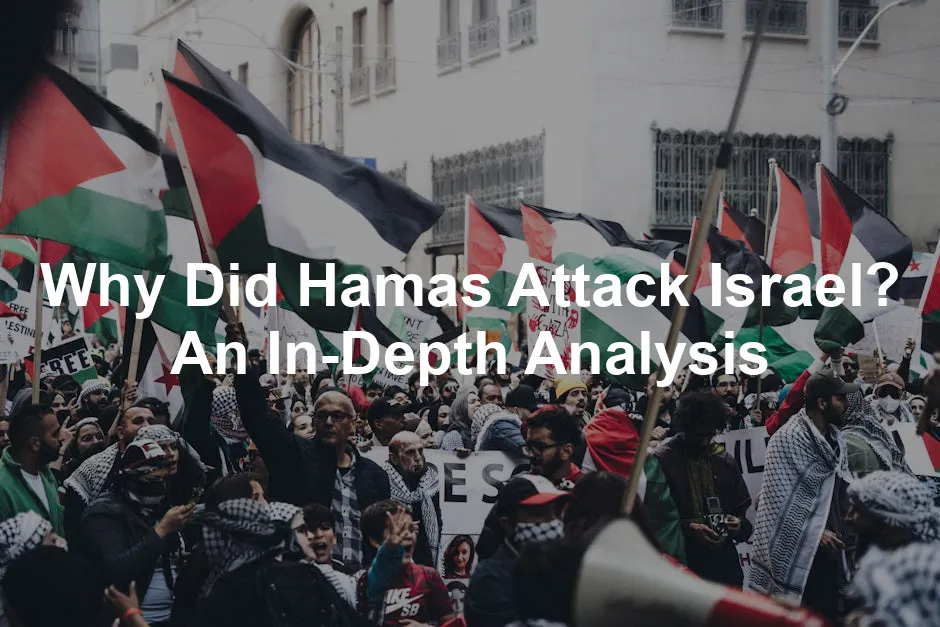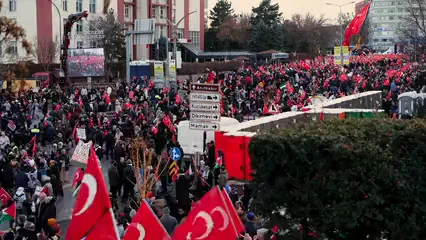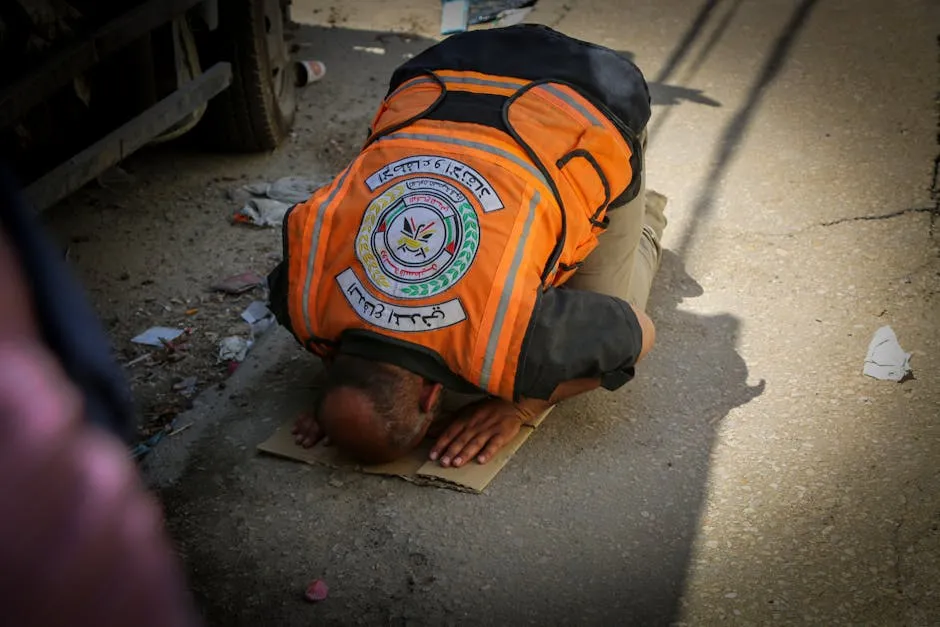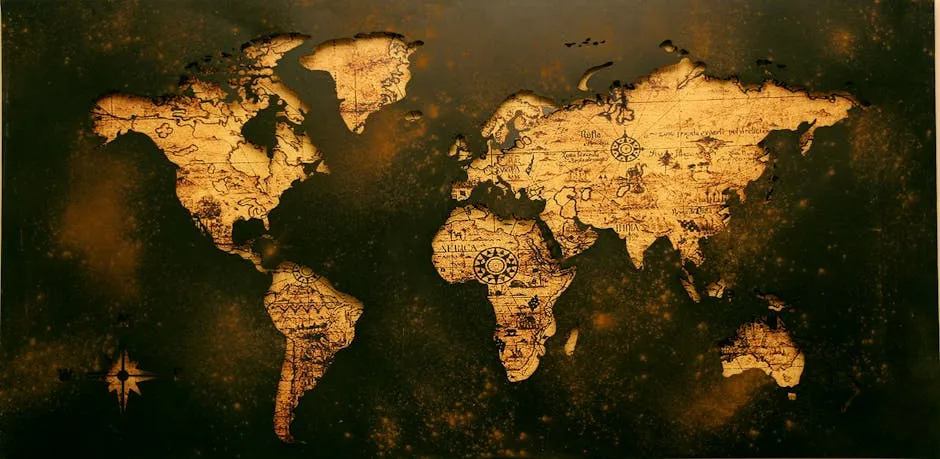
Why Did Hamas Attack Israel? An In-Depth Analysis
Introduction
On October 7, 2023, Hamas launched a significant and deadly attack on Israel. This event marked a pivotal moment in the ongoing Israeli-Palestinian conflict. Understanding the motives behind this assault requires a look at both historical tensions and immediate triggers. Exploring these factors sheds light on why Hamas chose this moment for their actions.

Summary and Overview
The October 7 attacks by Hamas resulted in over 1,200 Israeli deaths, including civilians and soldiers. Approximately 250 hostages were taken back to Gaza, igniting an intense military response from Israel, which included airstrikes and ground operations. This conflict has had profound implications for the Israeli-Palestinian relationship, raising tensions across the region. The aftermath of these events has left thousands of Palestinian casualties, exacerbating humanitarian crises in Gaza. The long-standing struggle between Israel and Hamas continues to shape Middle Eastern geopolitics, with both sides entrenched in their positions.
Understanding the reasons behind the attack by Hamas is crucial. For a deeper insight into this event, read about why Hamas attacked.
Historical Context of the Israel-Palestine Conflict
The Origins of Hamas
Hamas was founded in 1987 during the First Intifada, emerging as an offshoot of the Muslim Brotherhood. Its ideological roots are deeply embedded in the struggle for Palestinian nationalism and resistance against Israeli occupation. The organization’s charter calls for the establishment of an Islamic state across all of historic Palestine, rejecting the legitimacy of Israel. Over the years, Hamas has evolved from a grassroots social movement into a dominant political force in Gaza. Key milestones include its electoral victory in 2006, which led to a violent takeover of the Gaza Strip in 2007, solidifying its governance over the territory. This rise to power has been marked by ongoing conflicts with Israel, as well as internal strife with the Palestinian Authority in the West Bank. Understanding these historical developments is crucial for grasping Hamas’s current strategies and motivations.

If you’re curious about the broader historical context of the Israeli-Palestinian conflict, consider picking up “A History of the Israeli-Palestinian Conflict” by Mark Tessler. This book dives deep into the nuances and intricacies that have shaped this ongoing struggle.
Previous Conflicts and Tensions
Since its inception, Hamas has engaged in several major conflicts with Israel, notably in 2008, 2012, and 2014. Each of these confrontations stemmed from escalating tensions, often triggered by specific flashpoints. In 2008, the conflict erupted after Israel launched Operation Cast Lead in response to Hamas rocket fire. This military action led to significant casualties, particularly among Palestinians, and further entrenched hostilities.
The 2012 conflict, known as Operation Pillar of Defense, was sparked by the assassination of a Hamas military leader. This operation saw intense exchanges of fire, causing civilian casualties on both sides. The 2014 war, referred to as Operation Protective Edge, was one of the deadliest, with over 2,200 Palestinians and 73 Israelis losing their lives.
These conflicts have deeply impacted both populations. For Palestinians, the destruction of homes and infrastructure in Gaza has compounded existing humanitarian crises. Israelis, on the other hand, have faced the trauma of rocket attacks and the loss of lives, creating a cycle of fear and retaliation that continues to this day.

For an insightful read on the political dynamics at play, check out “The Iron Wall: Israel and the Arab World” by Avi Shlaim. This book provides a critical perspective on the historical and political context of the conflict.
Factors Leading to the October 7 Attack
Israeli Government Policies
The far-right Israeli government has significantly influenced Palestinian sentiments. Policies promoting settlement expansion in the West Bank have heightened tensions. These settlements are seen as encroachments on Palestinian land, fueling resentment and anger.
Additionally, military actions in the West Bank have intensified feelings of frustration among Palestinians. For many, these policies symbolize ongoing oppression and the denial of their rights. The increasing rhetoric from Israeli leaders often dismisses Palestinian concerns, leaving little room for dialogue. This environment of hostility may have contributed to Hamas’s decision to launch the October 7 attack.

To gain a better understanding of the broader implications of these policies, take a look at “The Gaza Strip: The Political Economy of De-Development” by Sara Roy. This book examines the economic hardships faced by Palestinians under occupation.
Palestinian Grievances
The ongoing occupation of Palestinian territories has resulted in severe economic hardships and humanitarian crises, particularly in Gaza. Many families struggle to access basic necessities like clean water, food, and healthcare due to the blockade. These dire conditions foster a sense of hopelessness among the population.
Specific incidents, like confrontations at the al-Aqsa mosque in Jerusalem, have further inflamed tensions. Israeli actions perceived as provocations have often led to violent reactions. For many Palestinians, these grievances create a narrative of resistance, making the October 7 attack seem like an act of desperation and a bid for recognition.

Geopolitical Dynamics
The regional landscape has changed significantly in recent years. Normalization efforts between Israel and various Arab states have raised questions about the Palestinian issue’s prominence. Countries like the UAE and Bahrain have established diplomatic ties with Israel, which some Palestinians view as a betrayal. This shift leaves Hamas feeling increasingly isolated.
Iran plays a crucial role in this context. It openly supports Hamas, providing funding, weapons, and political backing. This alliance bolsters Hamas’s position in the face of diminished Arab support. Iran’s backing also complicates regional tensions, especially as it counters Israeli influence. The interplay between Iranian support for Hamas and normalization efforts among Arab states contributes to the ongoing strife in the Middle East.

Objectives of the Attack
Hamas had clear goals with its recent assault on Israel. Primarily, the group aimed to inflict heavy casualties on Israelis as a show of force. Reports indicate that directives for Hamas fighters included taking hostages to leverage for future negotiations. Such actions are intended to reinforce Hamas’s image as a defender of Palestinian rights.
Moreover, Hamas seeks to reclaim its popularity among Palestinians. The dire conditions in Gaza have led to dissatisfaction with Hamas’s governance. By launching this attack, Hamas hopes to rally support and reaffirm its role as a leading resistance movement. The attack serves both military and political purposes, aiming to restore legitimacy in the eyes of its constituents.

For a comprehensive look into the historical context of the conflict, check out “The Israel-Palestine Conflict: One Hundred Years of War” by James L. Gelvin. This book provides an in-depth analysis of the historical developments that have shaped the conflict.
Timing and Planning
The timing of the October 7 attack was no accident. It coincided with a period of heightened regional tensions, particularly regarding Israeli policies in the West Bank and Jerusalem. Recent events, such as confrontations at the al-Aqsa mosque, have inflamed sentiments among Palestinians. These incidents provided Hamas with a compelling narrative to justify its actions.
Planning for the operation took considerable time, with estimates ranging from several months to two years. This meticulous preparation allowed Hamas to execute a multi-faceted attack, catching Israeli forces off guard. By striking at a moment of perceived vulnerability, Hamas aimed to maximize the impact of its offensive and draw attention to its cause on the international stage.
Immediate Impact of the Attack
Casualties and Humanitarian Crisis
The October 7 attack resulted in over 1,200 Israeli deaths. Among them were civilians, soldiers, and foreign nationals. The assault also left around 3,400 people injured. In Gaza, the humanitarian situation quickly deteriorated. Reports indicate that over 41,600 Palestinians have died, with many being civilians. The bombardments have destroyed homes, schools, and medical facilities, displacing millions. Basic necessities like food, water, and medical supplies are scarce. The long-term implications for civilians are grave, affecting future generations. This conflict has exacerbated the already critical humanitarian crisis in Gaza, leaving communities in despair.

Israeli Military Response
In response to the attack, Israel launched extensive military operations. This included airstrikes, artillery fire, and ground incursions into Gaza. Israeli Prime Minister Benjamin Netanyahu declared the objective was to dismantle Hamas’s military capabilities. The Israeli government aims to secure the safe return of hostages and restore security for its citizens. As military actions escalate, civilian casualties in Gaza continue to rise. This harsh response raises concerns about the humanitarian implications for the region. The cycle of violence seems poised to deepen, impacting both Israeli and Palestinian lives for years to come.
Regional and International Reactions
Reactions from Arab Nations
Neighboring Arab nations reacted swiftly to the attack. Many condemned Hamas’s actions while criticizing Israel’s military response. Countries like Egypt and Jordan expressed concern over escalating violence and humanitarian crises. The reaction reflects the delicate balance in Arab-Israeli relations. Normalization efforts between Israel and some Arab states may face setbacks. Many Palestinians feel betrayed by these diplomatic moves, viewing them as a disregard for their plight. The October 7 attack has reignited discussions about Palestinian rights in the Arab world. This shift may influence regional politics, with leaders reassessing their stances on the Israeli-Palestinian conflict.

If you’re interested in a comprehensive overview of the Israeli-Palestinian conflict, consider reading “The Palestinian-Israeli Conflict: A Very Short Introduction” by Martin Bunton. This book distills the complexities of the conflict into an accessible format.
Global Responses
The October 7 attack by Hamas elicited strong reactions worldwide. The United States condemned the violence, affirming support for Israel’s right to defend itself. President Biden emphasized the need to ensure Israel’s safety while also addressing the humanitarian crisis in Gaza.
European Union leaders echoed similar sentiments, calling for restraint and highlighting the importance of protecting civilians. The EU expressed concerns over escalating violence and urged both parties to seek dialogue.
The United Nations condemned the violence but faced criticism for its inability to resolve the long-standing conflict. Many member states urged immediate humanitarian assistance to Gaza, emphasizing the need for a ceasefire.
This attack has shifted global perceptions of the Israeli-Palestinian conflict. Many now recognize the urgent need for a sustainable resolution, as the cycle of violence continues to claim innocent lives. The international community is increasingly aware that lasting peace requires addressing the root causes of the conflict.

Future Prospects
Potential for Further Escalation
The likelihood of further military confrontations between Hamas and Israel remains high. Both sides are entrenched in their positions, with Israel vowing to dismantle Hamas’s military capabilities. Meanwhile, Hamas may feel pressured to respond to Israeli actions, perpetuating the cycle of violence.
Potential peace initiatives face significant challenges. The current climate is marked by distrust and hostility, making negotiations seem distant. Despite calls for dialogue, both parties seem unwilling to compromise, raising concerns about future escalations.

Humanitarian and Political Ramifications
The long-term humanitarian consequences for Gaza and Israel are profound. The ongoing violence has devastated infrastructure in Gaza, leading to food and medical shortages. The humanitarian crisis continues to worsen, affecting millions of civilians.
Politically, the implications for Palestinian governance are significant. Hamas’s leadership may face challenges in maintaining support amid growing discontent. The need for effective governance and improved living conditions is critical for the future of Palestinian leadership.
This situation also raises questions about the future of the Palestinian Authority. The ongoing conflict could lead to shifts in power dynamics, impacting the broader Palestinian political landscape. The potential for new leadership styles or factions emerging is an essential aspect to monitor in the coming months.
Please let us know what you think about our content by leaving a comment down below!
Thank you for reading till here 🙂
All images from Pexels




